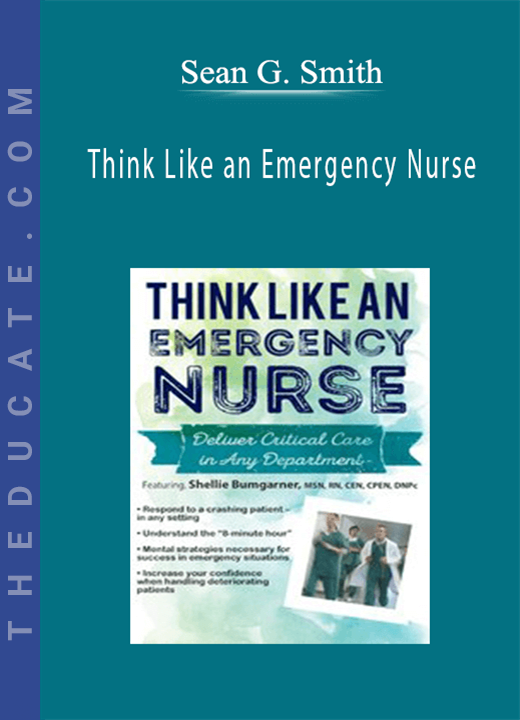Description
Think Like an Emergency Nurse: Deliver Critical Care in Any Department – Sean G. Smith
- Respond to a crashing patient – in any setting
- Understand the “8-minute hour”
- Mental strategies necessary for success in emergency situations
- Increase your confidence when handling deteriorating patients
Your coworker calls for help – you go in to see her patient, sitting up and talking just a few minutes ago, now turning blue and gasping for air. You have a real chance to intervene and make a difference – that’s why you became a nurse! What will you do?
Imagine you are taking care of your patient – anywhere – the office, clinic, Nursing Home, OR, in the community and suddenly grasp that an emergency situation is unfolding. Do you know what to do? How to respond? Even if you call an ambulance or have a rapid response team coming, YOU may still be taking care of that patient for up to 8 minutes or more. What can YOU do in that time to improve the chances of a positive outcome?
How will you help save lives?
Your patient down the hall calls for help. As you enter the room, you see him begin to vomit blood. He becomes pale, and less responsive – but still awake. You call a Rapid Response, and stay with him until the team arrives. They assume care of the patient.
You’re left wishing you had done more – he was your patient, after all.
This intense course will provide you with the clinical insights and critical thinking skills that ED nurses excel at. You will no longer need to feel uncertain and scared.
The ability to assess, intervene and advocate will be reinforced through exciting clinical cases. You will experience the dramatic changes in your own practice when you work your next shift!
- Develop a plan to respond to a crashing patient.
- Practice what is needed to respond quickly to help your sickest patients.
- Determine the immediate interventions necessary to save lives.
- Practice the mental strategies necessary for success.
- Distinguish between “sick” vs. “not sick”.
- Analyze clinical scenarios presented.
- Formulate a plan of action to deal with an emergency.
How will you improve patient outcomes?
- Failure to rescue and how to avoid it
- Increasing your confidence in emergent situations
- Planning for the worst at every patient encounter
- Advocating for your patient
- Communicating high-risk information clearly
- Mental strategies for success
- Cognitive pre-planning
- How the fire service relates to preparation for success
Risk Reduction
- Recognizing risk for clinical decline
- How to intervene before an event
- Why respiratory rate matters
- Know your strengths and have a plan to handle your weaknesses
- Assemble your team
Common Emergency Conditions
- The steps you can take to save lives
- The 3 highest priority interventions for each
- Common Emergency Conditions
- Cardiac Arrest
- Choking/Dislodged tracheostomy
- Major Trauma
- Control of hemorrhage
- Sepsis
- GI Bleed
- Neurology
- CVA/TIA: Acute Ischemic & Hemorrhagic
- Seizure
- Subarachnoid bleed
- Intracranial hypertension
- Is that blood pressure of 170/90 truly dangerous?
- Cardiology
- Dysrhythmias
- Ventricular fibrillation
- Ventricular tachycardia vs. Asystole
- SVT
- Rapid atrial fibrillation/flutter
- Why is my patient tachycardic?
Prioritization & Practice
- What matters most when the patient crashes
- How to practice every day in 2 minutes or less
- Why sick is sick until proven otherwise
Team Preparation
- Who is coming to help you?
- Team dynamics
- What if you’re alone?
Cognitive Error
- Which came first, the MI or the MVA?
- Don’t put the cart before the horse
Putting it Together: Skills Lab & Clinical Scenarios
- Group review of patient cases
- Practice with instructor feedback
- Use of “preparation sheet”







9 reviews for Think Like an Emergency Nurse: Deliver Critical Care in Any Department – Sean G. Smith
There are no reviews yet.